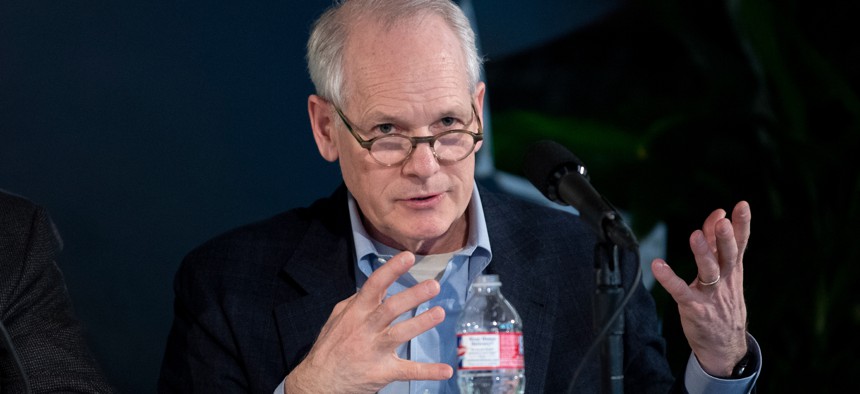
Kurt DelBene speaks at a March 2020 meeting of the Defense Innovation Board. DOD photo by EJ Hersom
Vista Modernization Still a Priority at VA, but Funding Is a Question
Two instances of the homegrown electronic health record have been moved to the cloud as part of a pilot project, but it's not clear if funding or support exists for more cloud migration as VA transitions to a commercial electronic health record.
Kurt DelBene, the new chief information officer at the Department of Veterans Affairs, said he planned to continue support of the agency's homegrown electronic health records system during the transition to a commercial system scheduled to be completed in 2028.
The modernization project, launched in 2017 with a planned $16 billion budget, has its own section of the VA's budget outside the Office of Information and Technology, and its leader reports to the agency's deputy secretary, Donald Remy. But OI&T is deeply enmeshed in the shift to the same Cerner commercial electronic health record system, providing support for infrastructure development and readiness.
At the same time, OI&T is responsible for keeping the Veterans Health Information Systems and Technology Architecture (Vista) operational. For now, most patient care is handled through Vista; the Cerner product is up and running at the Mann Grandstaff Medical Center in Spokane, Wash., and a few more deployments are scheduled in the near term.
"We're going to be using Vista for a period of time, and during that we can't falter on delivering great care to veterans," DelBene said on a Feb. 17 call with reporters. "So I think of Vista as a system that we absolutely have to continue to modernize. The health care landscape changes, and Vista needs to change and continue with the great support as it has had before."
Todd Simpson, VA's deputy assistant secretary of DevSecOps, said on the same call that two of the 130 separate instances of Vista have been put into VA's Amazon Web Services cloud as part of a pilot. In addition, all the backup data for Vista has been moved into the cloud.
Simpson said it was possible that more instances of Vista could be moved to the cloud. "It comes down to funding and overall strategic direction driven from [Electronic Health Record Modernization], leadership and of course the customer," meaning the Veterans Health Administration.
Funding is a big issue for Vista, in part because its costs are difficult to measure. The homegrown application now has 130 separate instances in use at different VA facilities.
Because of the way the legacy system has sprawled into multiple systems, "VA lacks a comprehensive definition of Vista and cannot accurately report Vista costs," the agency stated in its 2022 budget request.
Additionally, DelBene said plans to sunset Vista will have to wait for the EHRM project to advance. "Part of that is further out," DelBene said. "My major commitment is to continue to support necessary changes. Then we'll figure out what transition looks like."







